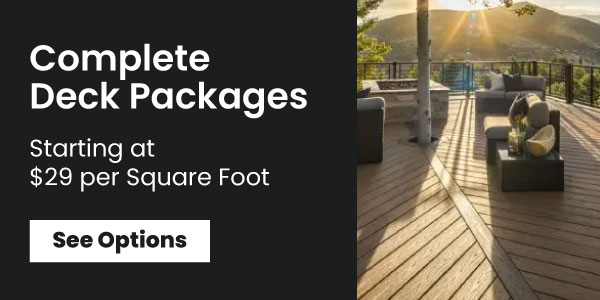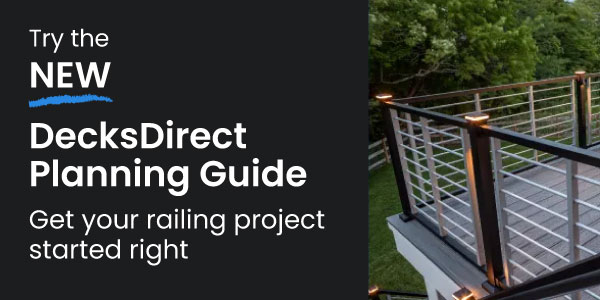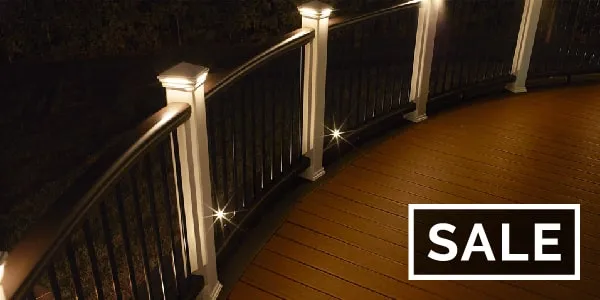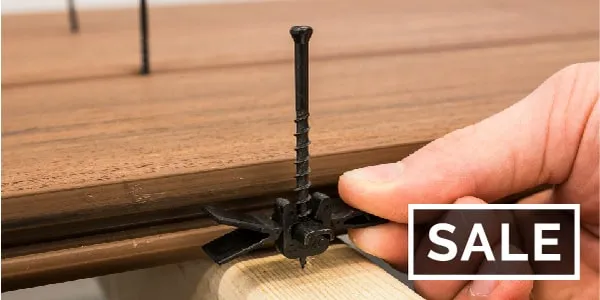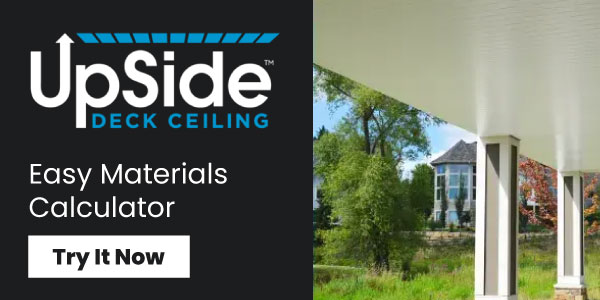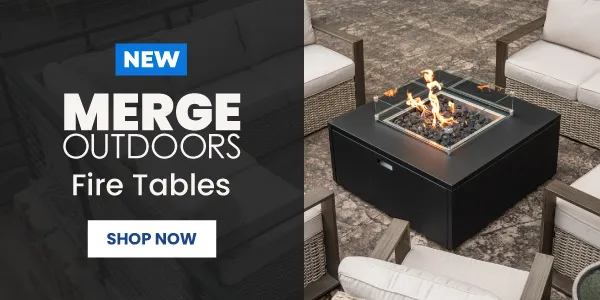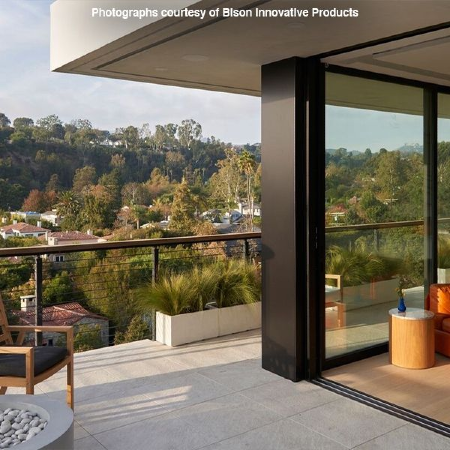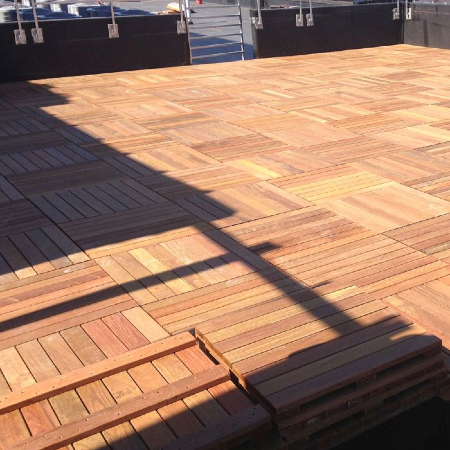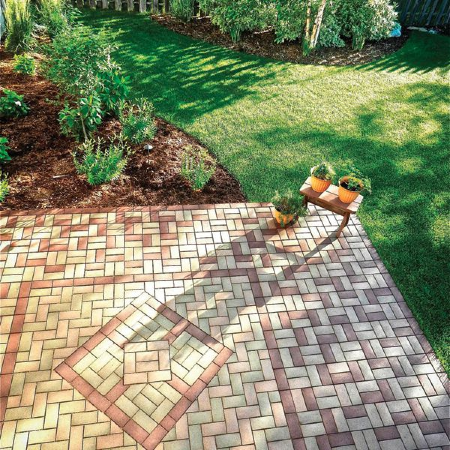Deck Material Options 2020
Are you starting a DIY deck build? Or thinking about beginning a decking renovation before these warm summer days start growing shorter and cooler? Regardless where you are in your deck project process, considering your deck material options is a crucial step to aid in the enjoyment and lasting quality of your outdoor space!
From deck design or deck makeover to complete backyard oasis, choosing the perfect deck flooring material can help enhance the overall look and feel of your deck, porch, or patio while also holding up to the toughest weather elements. Learn more about all deck materials under the sun including composite decking, PVC decking, mineral-based composite boards, pressure-treated decking, wood or composite deck tiles, and non-wood decking options to ensure you find the ideal choice for your family's backyard.

From just initial browsing online and in lumber stores, DIY deck builders certainly will notice the difference in cost between composite decking and natural wood immediately. Composite decking materials, like Trex, Fiberon, Deckorators, and Barrette, are typically more expensive per square foot than standard pressure-treated or Cedar lumber.
It's very important to keep in mind, however, the level and cost of maintaining a natural wood decking space can add up to much more. Also, many non-wood decking options are protected by manufacturer warranties on top of their water damage and rot-resistant material making a longer lasting deck space.
What is the Best Decking Material?
Building a deck is a great way to boost the value and curb appeal of your home while expanding your usable outdoor living space. Decks give your family and friends a beautiful outdoor space to relax and enjoy the great outdoors beyond your home.
With so many deck material options available, it can be hard to decide on just one in the middle of a DIY deck build. Read more below to learn about the top decking materials used in 2020 and find the perfect flooring choice for your outdoor space!
Top Decking Materials 2020
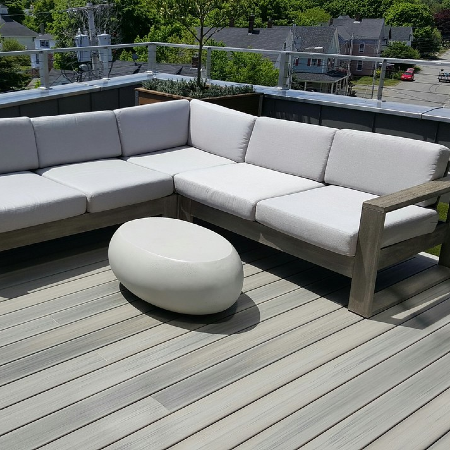
1. Composite Deck Boards
For an eco-friendly and incredibly durable deck flooring option that delivers the traditional look of wood decks, composite decking is a wonderful choice. This decking material combines recycled plastic particles with natural wood fibers to produce a hybrid material with lasting power.
It retains the classic look of exotic hardwood deck boards but has an added strength and resilience thanks to the plastic capstock coating. Low maintenance, scratch-resistant, and fade-resistant, composite deck boards simply require a good cleaning every once in a while with standard dishwashing soap and clean tap water.
Shop Composite Decking 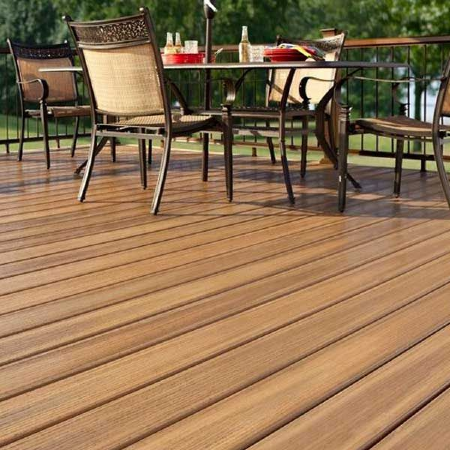
2. PVC Decking
Polyvinyl chloride (PVC) decking is the new kid on the block and rapidly gaining favor as a material that is as close to maintenance-free as decking will ever be. PVC deck boards have no organic or wood content making them completely resistant to rot and water damage for a long-lasting outdoor space. Premium PVC decking varieties have a cellular core wrapped with an exterior layer of solid PVC and come with a minimum 25-year warranty.
Eliminating any worry of water-damage, insects, or splintering, PVC deck boards deliver a high-performing decking option for a low-maintenance outdoor space. Lightweight while still dent and flame resistant, PVC flooring offers extraordinary slip-resistance when both wet or dry. PVC decking is an ideal option for homeowners looking to build an unbelievably long-lasting deck and perhaps a coordinating dock or boathouse along the waterfront.
Shop PVC Decking3. Mineral-Based Composite Decking
The latest technology in decking is mineral-based composite material, sometimes called MBC decking. Mineral-based composite deck boards, pioneered by Deckorators, are the next step in ultra-low-maintenance decking. Like traditional composite boards, they combine the look and feel of natural wood with the extreme durability, fade-resistance, and long lifespan of synthetic decking like PVC.
But mineral-based composite brings something else to the table: virtually no thermal expansion or contraction. In layman’s terms, that means MBC deck boards expand and contract only a tiny amount, even in climates where temperatures swing dramatically. That keeps fasteners from working themselves loose and cuts down even further on the inspection, maintenance, and upkeep you’ll have to do on your deck surface.
If you're interested in mineral-based composite decking, give our team a call at 1-888-824-5316 and we'll run through the available decking lines and color options with you.
Call For Mineral-Based Decking4. Porcelain Pavers
Create a truly stunning look on your patio, garden, or rooftop deck with the timeless appeal of the Porcelain Pavers from top brands like Bison. Perfect for homeowners or builders looking to expand their outdoor space beyond the deck, the Porcelain Pavers offer a unique aesthetic appeal that's also incredibly simple to put together.
Crafted from durable yet beautiful porcelain, Porcelain Deck Tiles are weather, stain, and fade resistant to deliver a long-lasting flooring option even around pools! Paver Trays and Splices will easily anchor your strong deck pavers down for a deck or patio surfacing option that stays in place for years to come and enhance the impact resistance of pavers over time.
Shop Porcelain Pavers 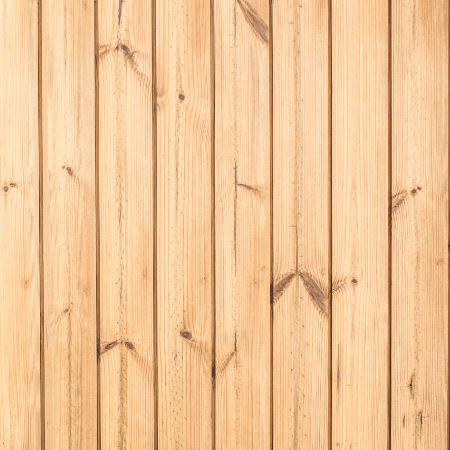
5. Pressure-Treated Wood
Treated lumber is by the most commonly used decking material due to the materials classic beauty and low cost point. Pressure treated lumber features a chemical treatment that makes the wood deck boards more resistant to common problems such as bug infestations, water damage, and rot.
Pressure-treated decking can cut down initial project costs - however, the maintenance level on pressure treated decking is high. Treated deck boards require an annual painting or staining to protect against damaging moisture and insects as well as to keep your decking looking good.
6. Wood Or Composite Deck Tiles
Environmentally-friendly, gorgeous, and cost-effective, composite deck tiles and wood deck tiles are a wonderful choice to cover or resurface an outdoor space such as patios, decks, and poolhouse areas on a budget.
Wood deck tiles are generally crafted in Hardwood, Cedar, Ipe, Mahogany, and Teak wood materials for a solid outdoor floor surface that's also visually appealing and stable. Composite deck tiles, like those from NewTechWood, are made of the same durable, low-maintenance composite material that makes composite decking such a great long-term deck material option.
Shop Deck Tiles7. Cedar Decking
Another popular decking choice throughout the United States is standard Cedar deck boards. Featuring a richer, warmer coloring than common pressure-treated pine decking, Cedar lumber delivers a red tone to your outdoor living space. With natural beauty and a resistant feel, Cedar deck flooring is quite durable for a natural and vulnerable wood and will typically last in good shape for around 15-20 years if taken proper care of.
Cedar deck lumber does require an annual staining or painting to protect the material from experiencing issues with damage from water and insects.
